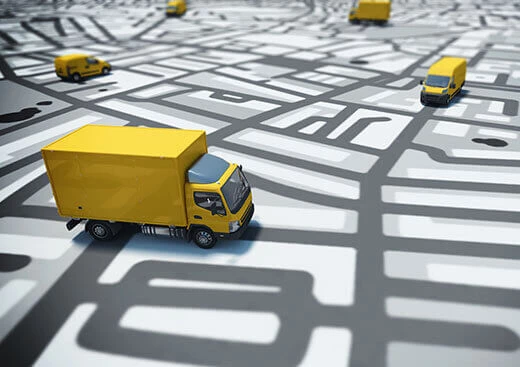Ensuring the safety of all workers, a safe workplace and a culture of safety.
The Work Health and Safety Act extends the scope of business liability for driver welfare and is relevant to all industries. A fleet-managed vehicle is considered a workplace. A duty of care is imposed on businesses and fleet managers to ensure the health and safety of drivers as employees within this workplace. The act makes it clear that everybody from business owners and managers to employees, contractors and suppliers is part of the Chain of Responsibility. This means everyone is responsible for taking steps to prevent incidents caused by risks such as mass, load restraint, dimension, fatigue, and speeding.
Build Your SolutionThe Work, Health & Safety legislation requires employers to provide and maintain safety at work, provide information, training & instruction as well as monitor workplace conditions to prevent injury.
Workplace safety should be top of mind, regardless of your business or industry. Just because people leave the building, does not mean they should leave your sight. Fleet management technology ensures you stay in touch with everything that’s happening when your personnel hit the road. It will help you implement and monitor policies around mobile workforce safety, track employee behaviour and vehicle conditions in real-time, and take proactive measures to remedy any risks or hazards.

For businesses with a mobile workforce, you need to be able to track the safety conditions and status of all your drivers at all times. Telematics lets you locate an employee within four metres accuracy, which means you can track drivers and vehicles wherever they are. When network coverage is poor, you can find last recorded locations and even employee satellite communications as a means to track outside of the mobile network.
Knowing the location of your vehicles and their drivers is one thing, the next consideration is maintenance. GPS vehicle tracking enables you to set up flags and automatic alerts when vehicles or equipment are due for a scheduled service - based on dates, engine hours or odometer values. These alerts can be set up in advance to ensure fleet managers have the time to call-in the asset.
Within the heavy-vehicle sector, one of the biggest issues to manage is speed. It's a factor that is constantly in the spotlight alongside fatigue and driver retention. One of the major benefits of implementing fleet management technology enable you to monitor and remedy any potential unsafe behaviour, that is, speeding.
With telematics, you are able to generate actionable data in a useful way to make more informed decisions and become proactive. When it comes to speed, you're able to set real-time alerts for speeding across your fleet by setting a threshold you want to know about. For example, one person in the business may want to know of everyone speeding over the limit to capture all events that occur. Others in the business may want to be alerted when they would need to take instant action, which may be 8km/h over the limit. With a thorough alerts and events management system, you're able to set these according to you and your role within the business.


In our recent benchmark survey, 69% of respondents cited fatigue management as a top concern. While there is are a large range of other challenges that can complicate an operation, fatigue is dangerous. Working for long stretches or over-night can leave drivers tired and increases the risk of incidents whilst on the road. The Chain of Responsibility (CoR) states that the it's everyone's duty in the transport chain to ensure safety. Being proactive about managing a driver's tasks at hand and their journey is an important step.
Yet relying on paper systems and manual process to manage fatigue is troublesome. An electronic work diary (EWD) solution can automate your fatigue information in real-time and allows your drivers to concentrate on the road ahead and get on with their job rather than having to manually calculate work and rest hours.